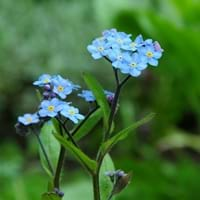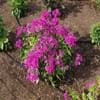Life Span
Annual and Perennial
Perennial
Type
Flowering Plants, Shrubs
Vegetable
Origin
Eastern Asia
Southern Europe
Types
Bigleaf hydrangea, Hortensia, Smooth hydrangea, Oakleaf hydrangea, Annabelle
Bigleaf hydrangea, Hortensia, Smooth hydrangea, Oakleaf hydrangea, Annabelle
Habitat
Fields, gardens, meadows, rocky outcrops, waste ground, yards
Forest edges, Hillside, Woods
USDA Hardiness Zone
Not Available
5-9
AHS Heat Zone
8 - 1
Not Available
Habit
Clump-Forming
Clump-Forming
Flower Color
Blue, White
Yellow green
Flower Color Modifier
Bicolor
Bicolor
Fruit Color
Not Available
Sandy Brown
Leaf Color in Spring
Green, Gray Green
Green
Leaf Color in Summer
Green, Gray Green
Green
Leaf Color in Fall
Green, Gray Green
Green
Leaf Color in Winter
Light Green
Light Green
Leaf Shape
Lanceolate
Oblovate
Plant Season
Spring, Summer
Spring, Summer, Fall
Sunlight
Full Sun, Partial Sun
Full Sun, Partial Sun
Type of Soil
Loam
Loam, Sand
The pH of Soil
Acidic, Neutral
Neutral
Soil Drainage
Well drained
Well drained
Bloom Time
Early Spring, Spring, Late Spring, Early Summer, Summer, Late Summer
Early Summer, Summer, Late Summer
Tolerances
Not Available
Drought
Where to Plant?
Ground
Container, Ground
How to Plant?
Divison, Seedlings
Seedlings, Stem Planting
Plant Maintenance
Medium
Medium
Watering Requirements
Do Not over Water
Not Available
In Summer
Lots of watering
Average Water
In Spring
Moderate
Moderate
In Winter
Average Water
Average Water
Soil pH
Acidic, Neutral
Neutral
Soil Type
Loam
Loam, Sand
Soil Drainage Capacity
Well drained
Well drained
Sun Exposure
Full Sun, Partial Sun
Full Sun, Partial Sun
Pruning
Remove damaged leaves, Remove dead branches, Remove dead leaves
Remove damaged leaves, Remove dead branches, Remove dead leaves
Fertilizers
All-Purpose Liquid Fertilizer
All-Purpose Liquid Fertilizer
Pests and Diseases
Red blotch
Red blotch
Plant Tolerance
Drought
Drought
Flower Petal Number
Single
Single
Fragrant Bark/Stem
No
Yes
Foliage Texture
Medium
Medium
Foliage Sheen
Matte
Glossy
Evergreen
No
Semi-Evergreen
Attracts
Bees, Flies
Butterflies
Allergy
Chest tightness, Diarrhea, Dizziness, Nausea, Vomiting
Chest tightness, Diarrhea, Dizziness, Nausea, Vomiting
Aesthetic Uses
Beautification, Cottage Garden, Ground Cover, Showy Purposes
Not Available
Beauty Benefits
Not Available
Not Available
Edible Uses
Yes
Not Available
Environmental Uses
Air purification
Air purification
Medicinal Uses
Fever, Kidney problems, Urinary tract problems
Fever, Kidney problems, Urinary tract problems
Part of Plant Used
Flowers, Root
Flowers, Root
Other Uses
Culinary use, Used as Ornamental plant
Not Available
Used As Indoor Plant
No
Not Available
Used As Outdoor Plant
Yes
Yes
Garden Design
Bedding Plant, Cottage garden, Edible, Hanging Basket, Wildflower
Edible, Herb / Vegetable
Botanical Name
Myosotis arvensis
PETROSELINUM crispum var. tuberosum 'Bartowich Long'
Common Name
Forget-Me-Not
Root Parsley
In Hindi
Forget-Me-Not
Hydrangea
In German
Forget-Me-Not
Hortensie
In French
Forget-Me-Not
Hortensia
In Spanish
Arce japonés
Hortensia
In Greek
Forget-Me-Not
υδραγεία
In Portuguese
Forget-Me-Not
Hortênsia
In Polish
Forget-Me-Not
Hortensja
In Latin
Forget-Me-Not
Hibiscus
Phylum
Magnoliophyta
Not Available
Class
Magnoliopsida
Not Available
Order
Lamiales
Not Available
Family
Boraginaceae
Apiaceae
Genus
Myosotis
Not Available
Clade
Not Available
Not Available
Tribe
Not Available
Not Available
Subfamily
Not Available
Not Available
Number of Species
Not Available
Difference Between Field Forget Me Not and Root Parsley
If you are confused whether Field Forget Me Not or Root Parsley are same, here are some features about those plants to help you choose better. Many people think that these two plants have the same characteristics, but one can see Field Forget Me Not and Root Parsley Information and learn more about it. Fertilizers required for proper growth of Field Forget Me Not are All-Purpose Liquid Fertilizer, whereas for Root Parsley fertilizers required are All-Purpose Liquid Fertilizer. Hence, one should know the basic difference between Field Forget Me Not and Root Parsley if you are planning to have them in your garden to enhance its beauty.
<
Flowering PlantsImportance of Field Forget Me Not and Root Parsley
Want to have the most appropriate plant for your garden? You might want to know the importance of Field Forget Me Not and Root Parsley. Basically, these two plants vary in many aspects. Compare Field Forget Me Not and Root Parsley as they differ in many characteristics such as their life, care, benefits, facts, etc. Every gardener must at least have the slightest clue about the plants he wants to plant in his garden. Compare their benefits, which differ in many ways like facts and uses. The medicinal use of Field Forget Me Not is Fever, Kidney problems and Urinary tract problems whereas of Root Parsley is Fever, Kidney problems and Urinary tract problems. Field Forget Me Not has beauty benefits as follows: Not Available while Root Parsley has beauty benefits as follows: Not Available.
Compare Facts of Field Forget Me Not vs Root Parsley
How to choose the best garden plant for your garden depending upon its facts? Here garden plant comparison will help you to solve this query. Compare the facts of Field Forget Me Not vs Root Parsley and know which one to choose. As garden plants have benefits and other uses, allergy is also a major drawback of plants for some people. Allergic reactions of Field Forget Me Not are Chest tightness, Diarrhea, Dizziness, Nausea and Vomiting whereas of Root Parsley have Chest tightness, Diarrhea, Dizziness, Nausea and Vomiting respectively. Having a fruit bearing plant in your garden can be a plus point of your garden. Field Forget Me Not has no showy fruits and Root Parsley has no showy fruits. Also Field Forget Me Not is not flowering and Root Parsley is not flowering . You can compare Field Forget Me Not and Root Parsley facts and facts of other plants too.





